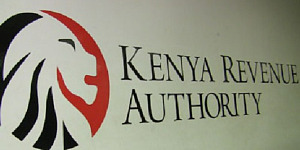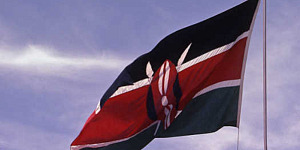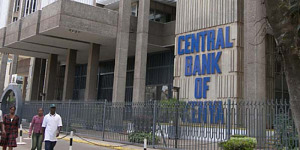Kenya's central bank maintained its Central Bank Rate (CBR) at 10.0 percent to anchor inflation expectations, saying inflation was expected to remain within its target range in the short term but there are "increased uncertainties with regard to the prevailing drought conditions and risks in the global markets.
The Central Bank of Kenya (CBK), which cut its rate by 150 basis points in 2016, noted inflation eased to 6.4 percent in December from 6.7 percent in November, partly reflecting the waning effect of December 2015's excise tax rise.
And while there are no demand pressures in the economy, the CBK said food inflation remains elevated due to unusually dry weather, with food and electricity prices expected to remain elevated in the near term.
While the economy was "robust" in the third quarter of 2016, the central bank said it still couldn't determine the impact of the government's decision to impose a cap on banks' lending and deposit rates as banks were reviewing their business models to improve their resilience in the new situation.
As of Sept. 14, last year lending and deposit rates at Kenya's banks were capped at 4 percentage points above the central bank's CBK rate.
Kenya's government imposed the cap to boost local lending, but it has been heavily criticized amid fears that it could unnerve investors and lead to a shift into foreign currencies.
Local banks also criticized the limit, saying credit may dry up if they can't price loans according to risks, and the International Monetary Fund (IMF) last November expressed its concern over the measure, saying experience from other countries shows rate controls are ineffective, give rise to unintended negative consequences, can lead to lower economic growth, undermine efforts to reduce poverty and the effectiveness of monetary policy.
Following its warnings about the cap, the IMF last week explicitly asked Kenya's Treasury to remove the interest rate caps on banks, saying it posed a risk to financial stability and had reduced access to credit and thus economic growth.
The IMF's statement was released after its executive board completed the first review of Kenya's performance under its current stand-by support program.
After a sharp fall in early January, Kenya's shilling has remained relatively stable in recent weeks with the CBK saying it was supported by a narrowing of the current account deficit to an estimated 5.5 percent of Gross Domestic Product in 2016 from 6.8 percent in 2015.
The shilling was trading at 104 to the U.S. dollar today, down 1.7 percent this year.
In the third quarter Kenya's economy grew by an annual rate of 5.7 percent, down from 6.0 percent in the second quarter while the central bank's foreign exchange reserves declined to US$6.936 billion from $7.305 billion as of last November.








































